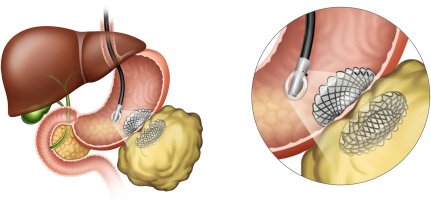
EUS Guided Pseudocyst Drainage is a minimally invasive procedure used to drain fluid from a pancreatic pseudocyst. It is performed under endoscopic ultrasound (EUS) guidance, which provides real-time imaging to ensure accurate placement of the drainage catheter. The goal is to relieve symptoms such as pain, infection, or bile duct obstruction caused by the pseudocyst.
Common questions about EUS Guided Pseudocyst Drainage:
A pseudocyst is a fluid-filled sac that forms in the pancreas, typically after acute pancreatitis. It is different from a true cyst because it does not have an epithelial lining.
The procedure is performed by inserting an endoscope with ultrasound capabilities into the stomach or duodenum. The physician uses real-time ultrasound imaging to locate the pseudocyst and guide the placement of a drainage catheter, allowing the fluid to drain out.
Although the procedure is generally safe, there are some risks, including infection, bleeding, or perforation of the surrounding organs. However, these complications are rare and are minimized by the skill of the performing physician.